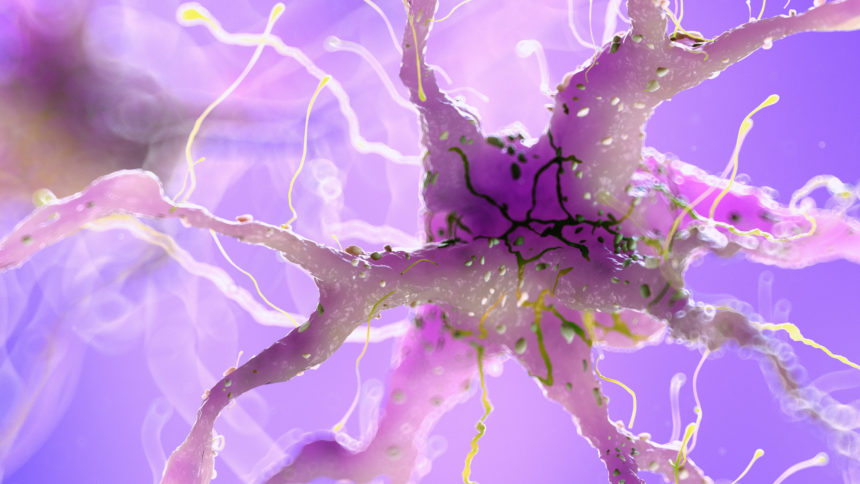
In a new study, researchers explain how cell death can lead to Alzheimer’s disease and vascular dementia — a discovery they say could pave the way for new treatments.
The researchers from Oregon Health & Science University found that a type of cell death destroys microglia cells, which are immune cells in the brain that would otherwise protect it. The team assessed post-mortem brain tissue from people with dementia. Its study was published on Aug. 21 in Annals of Neurology.
Stephen Back, MD, PhD, a neuroscientist and professor of pediatrics in the OHSU School of Medicine, said the results are a “major finding.”
He had already been studying myelin — the protective shield that covers nerve fibers in the brain. In the new study, Back looked at how its deterioration can set off the neurodegeneration process.
The researchers discovered that microglia breaks down in the white matter of the brain of people who have Alzheimer’s and vascular dementia. When myelin gets damaged, the microglia clear cellular debris in the immune system process. The new discovery found that the microglia are destroyed trying to clear iron-rich myelin during the cell death process, which is called ferroptosis. Ferroptosis is caused by a buildup of iron in cells.
“Everyone knows that microglia are activated to mediate inflammation,” Back said. “But no one knew that they were dying in such large numbers. It’s just amazing that we missed this until now.”
“We’ve missed a major form of cell death in Alzheimer’s disease and vascular dementia,” Back said. “We hadn’t been giving much attention to microglia as vulnerable cells, and white matter injury in the brain has received relatively little attention.”
The degeneration of microglia seems to be part of a mechanism that advances cognitive decline. Knowing this, pharmaceutical companies could look at new compounds to reduce or stop microglial degeneration in the brain.
“That’s where the field will go next,” he said. “A discovery like ours will stimulate a lot of excitement in the pharmaceutical industry to develop therapeutically important compounds.”



